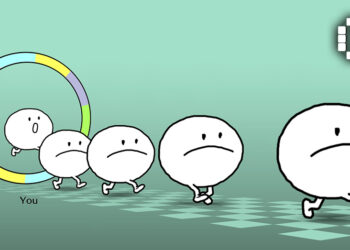At today’s Level Up KL 2020, various experts came out to discuss how games are improving our day-to-day life. In a panel titled “How Games Are Making The World A Better Place”, various experts like Dale Linegar from Games for Change and Dr Azadeh Feizpour from TALi Health discussed games and their place in improving people’s quality of life.
One of the biggest topics from the panel was the idea of addressing attention-related issues in children. Previously, children with attention-related disorders most common solution was pharmaceuticals. Worse still, failure to address these issues would be bad for children as they grow up.
“If your child starts behind, it’s likely they’ll stay behind”, Dr Feizpour says.
However, children’s brains are still developing. According to Dr. Feizpour, using mental stimulants like Ritalin would be bad for children since you can’t control how that would affect the child’s development.
Instead, she advises a non-invasive intervention. By using brain-training programs, she says it’s easier to assess and detect children who might have attention-deficit issues. Additionally, these programs can also be used to “strengthen core cognitive skills”.
TALi Health is trying to fix this problem with TALi Detect. It’s a game for iOS and android tablets, that helps children train their abilities to focus, as well as detect issues like impulsivity.
Games For Change Student Challenge
Of course, it’s not just about playing games. Arana Shapiro, managing director for Games For Change also talked about her program, the Student Challenge. This year-long program works to get more children to think about things in terms of game design.
According to Arana, the aim of the Student Challenge is to “Empower students and secure 21st century citizens”.
It’s about a lot more than just programming, though. Arana says that the Student Challenge makes sure to have topically relevant themes to make sure students are holistically engaged with not only making games, but current issues.
For example, one of their previous themes was about the extinction of endangered animals. For this theme, the Student Challenge teamed up with National Geographic to make sure students were well-informed on the issue before taking on the challenge.
“It’s about trying to help students use what they love to think about unique problems”, she says.
By doing this, Arana aims to bridge the content between formal and informal education. Moreover, it also allows children who are interested in game design to build each other up through a sense of community.
“If you are immersed in a community, you get better”, she says.

Parent’s Perspective
Of course, there’s always going to be questions about the dangers of games. Dale Linegar, Director at Games for Change also chimed in on how you still need to actively monitor how your children interact with screens.
“It’s about consumption versus creative use” he says. He talked about it in the context of idly watching videos on YouTube versus actually creating something. As a parent, he still controls the screen time for his young daughters.
Similarly, Dr Feizpour also chimed in to talk about video game addiction disorder. Comparing it with any other kind of consumption, she says that it’s about the volume you’re consuming it, rather than the actual act itself.
“I would draw a line between playing games and having a disorder”, she says.
Aside from children, experts also weighed in on the effects of video games in other fields. Dr Kathleen Yin from Macquarie University shared how games have the power to both affect bodies and minds.
According to Dr Yin, games like Wii Sports are a great tool for physically rehabilitating patients. Additionally, the growth of gamification also alters the way people behave, with games like Pokemon Go and Zombies Run getting people to go outside more.
























![[GUIDE] Farming Nightflower Pollen in Monster Hunter Wilds](https://cdn.gamerbraves.com/2025/03/MHWilds-Pollen_Guide_FI-360x180.jpg)


![[GUIDE] Artian Weapons in Monster Hunter Wilds – From Unlocking to Endgame Optimization](https://cdn.gamerbraves.com/2025/03/MHWilds-Artian-Weapons_Guide_FI-360x180.jpg)
![[GUIDE] Best Gathering Locations by Materials in Monster Hunter Wilds](https://cdn.gamerbraves.com/2025/02/MHWilds-Materials-Locations_News_FI-360x180.jpg)
![[GUIDE] Best Pop-Up Camp Locations in Monster Hunter Wilds](https://cdn.gamerbraves.com/2025/02/MHWilds-Pop-Up-Camp-Locations_Guide_FI-360x180.jpg)